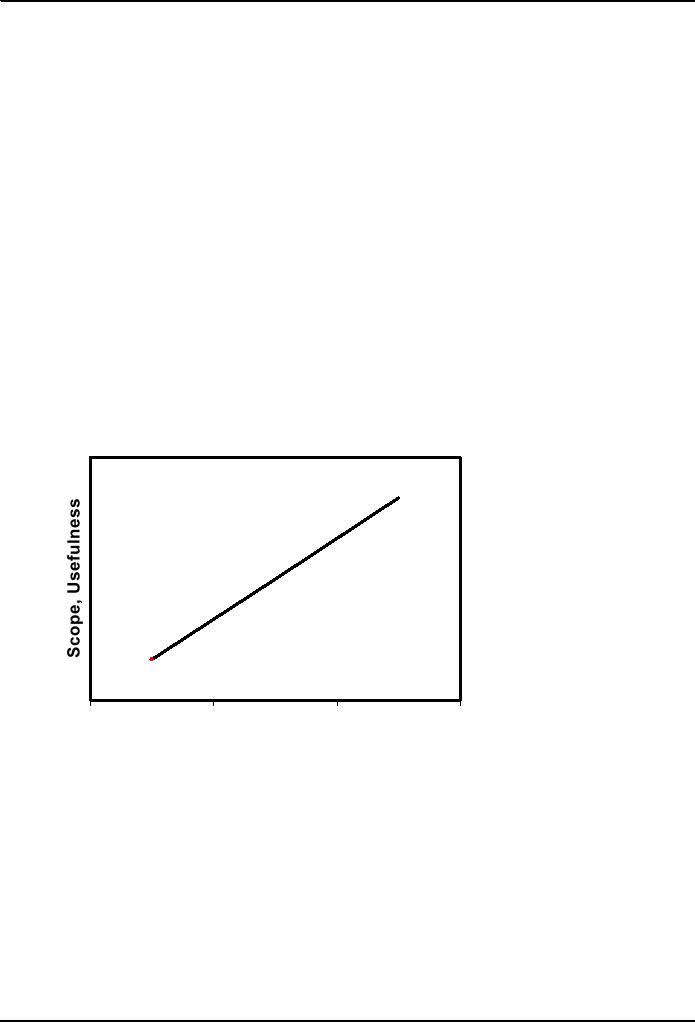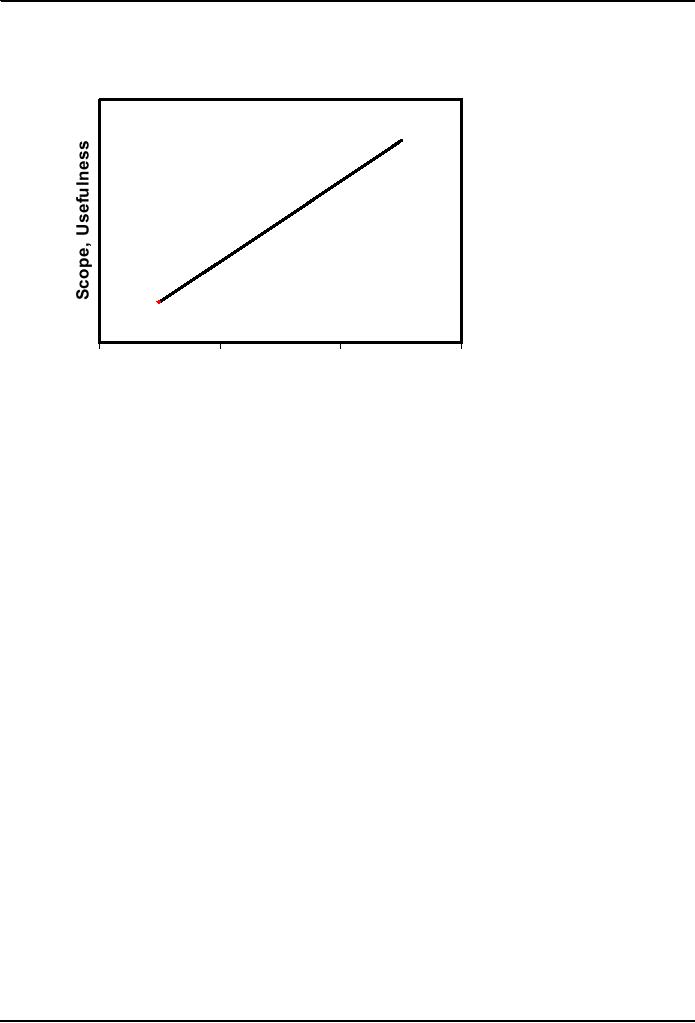 |

Conflict
Management HRM624
VU
Lesson
19
TRUST
AND ITS SIGNIFICANCE II
Quotations
"A verbal contract
isn't worth the paper it's
written on".
Samuel
Godwyn
If
you'll believe in me, I'll
believe in you.
Lewis Carroll
(1832
- 1898) British writer and
mathematician.
Believe
in yourself, but do not always
refuse to believe in
others.
Joaquim
Maria Machado de Assis (1839
- 1908) Brazilian novelist and
short-story writer
In this
lecture we will discuss the
following points regarding the importance
of trust.
· Trust
can be built between and
among disputants or parties
i.e. individuals, companies, or
countries
· High
levels of trust carry distinct
advantages.
· High
levels of trust are not
always attainable.
· That
a "business relationship" can
protect disputants when trust is
low or distrust is
high.
· Low
levels of trust can be promoted
into higher levels of trust.
Advantages
of high trust
level
Why
high level of trust is given importance, it has
certain advantages, such
as:
· Less
guesswork
· Fewer
formalities; greater efficiency
· Pleasant
feelings and comfortable work
environment
· Fosters
cooperation
· Better
quality of life for every
one
Origins
of trust
Calculus-based
trust can come directly from provisions
in contracts that give people incentives
not to harm
one
another as when an agreement specifies
penalties for breach.
Since
a contract is all that is needed to
create this form of trust, it is relatively
easy to establish. It can
be
created
even between hostile adversaries
using a penalty system.
Calculus
based trust can also come
from the course of dealing itself: in a
continuing relationship often
each
disputant
can count on the other disputant to
preserve the course of dealing
because of its
intrinsic
advantages
for those involved.
Knowledge
based trust comes from any
situation in which people become well
and so on.
Knowledge-based
trust need not be based on
intimate knowledge of the other disputant: it
may be relatively
narrow
and based on a course of
dealing. The cooperation cycle
can promote knowledge-based trust
easily.
Knowledge
based trust can also come
from any situation in which it is
clear that interests are
not in conflict.
Regular
communication can also promote
knowledge-based trust.
Identification-based
trust is hardest to establish. It is commonly
found among intimate
partners of families.
It is
also created in situations
involving a joint venture that
both disputants care about
deeply. However
certain
companies (MNCs for example)
build this trust through inculcation of
company specific
values.
Some
Japanese companies make
their employees sing loyalty
promoting poems/songs every
morning.
Effects
of trust
It is very
useful to operate with high
levels of trust, particularly with
identification based trust. It is seen
that
the higher the
level of trust, greater the chances of perpetuating
cooperation cycle.
71

Conflict
Management HRM624
VU
Typical
situations in which there is
little or no trust include brand new
relationships, such as
transactions
between
strangers, situations in which an
intimate relationship goes bad,
and situations in which a
betrayal
of trust
occurs in a cooperative relationship. The effect is to
move the disputants into a
competition cycle
and
toward a state of active
mistrust.
On contrary
low levels of trust can trigger a
cycle of competition. High
levels of trust produce good
feelings
and
generate good quality of
human life. Mistrustfulness creates a
perception of contrient
inter-dependence.
Mistrust
creates the impetus to hide information
and duplicate effort, which
escalate competition
cycle.
Building
of trust
When
one puts faith and trust in
another, and that confidence is
broken, it can create an
emotional response
that
elevates to conflict. To trust someone is
to place a high confidence level that the
relationship will not
be
compromised in any way...that I
can expect you to do what
you say. A trusting
relationship leads to
feelings
of confidence and security whereas a
breach of trust unleashes our
strongest emotions that
frequently
lead to conflict.
CBMs
(confidence building measures)
with India provide good
example of building trust. As a
consequence
of
these measures trade between
India and Pakistan is
increasing now.
Business
Relationships
A
business relationship is designed for
people who must be involved in a
relationship but who have
very
low
levels of trust in each
other.
A
business relationship has following
components.
· Explicit
and detailed agreements
· Formal,
preferably written communication
· No
sharing of emotion
· Balanced,
neutral assessment methods
Achieving a
Business Relationship through Effective
agreement Drafting
Nothing
destroys trust quite as fast as the
belief that the other disputant
has flagrantly violated a
hard-won
settlement
agreement. Unfortunately poor
agreement drafting can lead
to misunderstanding over the
terms
of a
settlement. In a climate of low trust or
mistrust, a difference of interpretation
can be perceived as a
betrayal.
Effective agreement drafting
consists of the following
goals.
.
Accuracy and
completeness
.
Clarity and certainty
.
Flexibility
.
Legal enforceability
. Relationship
preservation
Accuracy
and completeness
The
resulting agreement should correctly and completely
set down the agreement of the
parties. It is critical
to
represent the settlement with
complete faithfulness and accuracy
and not to expand upon or
alter the
results
of negotiation.
Clarity
and certainty
The
agreement should make all rights,
responsibilities and procedures clear,
including minutiae such as the
manner
of payment due date, delivery
date, responsibility for shipping
goods, and risk of damage
during
shipment.
Flexibility
The
agreement should be workable despite
unforeseen developments that
might occur in the
future.
Flexibility
and certainty are often
traded against one another in a
casebycase balancing
process.
72

Conflict
Management HRM624
VU
Legal
enforceability
The
agreement should preserve or attain the
legal status of a contract,
and the limits of legal
enforceability
should be
specified where necessary.
The appropriate signature line,
seals, and acknowledgement
forms
should be
used as required.
Relationship
preservation
The
resulting agreement should avoid damaging
relationship by preserving fairness, by
avoiding
inflammatory,
insulting or demeaning language
and by minimizing the likelihood of
misinterpretation.
Low
trust situation
Following
are some of the situations
where level of trust is low
· New
transactions and relationships
· Breakdown in
close relationships
· Historical
enemies
· Apparent
betrayal of trust
Dealing
with low trust
situations
In
intimate relationships, preserving
identification-based trust is the whole point. In
other situations,
create
calculus-based
trust.
Easier a
trust is established, the
lower its scope
Broad
Moderate
Narrow,
Limited
Easy
Moderate
Hard
Ease of
Establishing
73

Conflict
Management HRM624
VU
Building
trust
Identi-
Broad
fication
Moderate
Knowledge
Narrow,
Calculus
Limited
Easy
Moderate
Hard
Ease of
Establishing
Key
Points to Remember
Following
points should be kept in mind
for developing a trusting
environment.
· Be a model of
calm and control
· Don't
give in to emotional outbursts
· Don't
assume people are being difficult
intentionally
· Find
a quiet place in to resolve
breaches of trust quietly and
privately
Set
some ground rules for the
discussion:
No
raising of voices
This is
not a debate
Speak
only for yourself..."I"
phrases
Confront
the issues, not the people
-
Maintain or enhance
self-esteem
Summary
Trust
can be built with an appropriate
strategy between or among individuals,
companies, or countries.
Confidence
building measures (CBMs) between
India and Pakistan present a
good example to build
trust
between
the two nations. In present
day environment and in
increasingly controlled world, trust
can be built
with
explicit tactics and
strategies.
74
Table of Contents:
- INTRODUCTION TO CONFLICT:Dispute, Legal Dispute, Call the police
- DISPUTE RESOLUTION 1:Positive affect in Negotiation, Alternative Dispute Resolution
- DISPUTE RESOLUTION II:Adjudication, Litigation, Mediation-Arbitration
- PRECONCEPTIONS ABOUT CONFLICT I:Pedagogical development, Pressures against Innovation
- PRECONCEPTIONS ABOUT CONFLICT II:Cultural beliefs about interpersonal conflict, Why strategies of change fail
- CONFLICT DIAGNOSIS:Who Needs to Know About Conflict Diagnosis?, Steps in Conflict Diagnosis
- RECURRENT THEMES IN CONFLICT DIAGNOSIS I:The Seven Steps of Social Behavior, Seven steps to diagnose conflict
- RECURRENT THEMES IN CONFLICT DIAGNOSIS II:Themes of Conflict Diagnosis
- DESCRIBING THE CONFLICT I:Description of Conflict, Identifying Interpersonal Conflict
- DESCRIBING THE CONFLICT II:Step 1 for Conflict Diagnosis, interpersonal or intrapersonal
- SOURCES AND CAUSES OF CONFLICT I:Main Sources of Conflict, Discussing major sources of conflict
- SOURCES AND CAUSES OF CONFLICT II
- INTEREST ANALYSIS I:Analyzing your interests, Analyzing the other disputant’s interests
- INTEREST ANALYSIS II:What are interests?, Tips for Interest Trees
- INTEREST ANALYSIS II:Principles and values, Basic Human Needs
- ASSESSING THE CHARACTER OF THE CONFLICT I, Premises of Deutsch’s Theory
- ASSESSING THE CHARACTER OF THE CONFLICT II:Techniques to transform competitive conflict into cooperative
- TRUST AND ITS SIGNIFICANCE I:What is Mistrust,Trust and business,Three levels of trust
- TRUST AND ITS SIGNIFICANCE II:Advantages of high trust level, Building of trust
- ASSESSING IMPEDIMENTS TO RESOLVE THE CONFLICT I:Motivation to seek vengeance, Mistrust
- ASSESSING THE IMPEDIMENTS TO RESOLVING THE CONFLICT II:Disempowered Disputant, Unpleasant Disputant
- ASSESSING THE NEGOTIATING STYLE I:Dual Concern Model, Dominating or competition style
- ASSESSING THE NEGOTIATING STYLE:Dual Concern Model, Tactics Used In Integrating
- ASSESSING POWER AMONG DISPUTANTS:Conflict and Power, Kinds of power in the Relationship Domain
- ASSESSING POWER AMONG DISPUTANTS II:Sources of Relationship Power, Context and Power
- POWER, CONFLICT, AND BATNA III:Role of Third Party in BATNA, Dealing with Power Imbalance
- STEREOTYPES, DIVERSITY, AND CONFLICT I:Stereotyping, Stereotyping in Interpersonal Conflict
- STEREOTYPES, DIVERSITY, AND CONFLICT:Categories of Diversity Issues, Seven Mental Processes to Prove Stereotypes
- STEREOTYPES, DIVERSITY AND CONFLICT III:Individual Difference and Social Category, Cultural differences in values
- MEDIATION I:When is mediation required, Processes Related to Mediation, Product of Mediation
- MEDIATION II:Important distinguishing factors, More Advantages and Disadvantages of Pure Mediation
- ADVANTAGES AND DISADVANTAGES OF MEDIATION I:Efficiency Consideration, Conflict Management and Prevention
- ADVANTAGES AND DISADVANTAGES OF MEDIATION II:Quality of Consent, Effects on the parties to mediation
- PROCESS OF MEDIATION:Stages of Mediation, Facilitative tactics in mediation
- LAW AND ETHICS OF MEDIATION I:Characteristics of mediation, Confidentiality
- LAW AND ETHICS OF MEDIATION II:Role of ethics in mediation, 8 Dimensions of Ethics in Mediation
- ARBITRATION I:Ways to Resolve Conflict, Advantages of Arbitration, Disadvantages of Arbitration
- ARBITRATION II:Varieties of Arbitration, Process of Arbitration, Contents of Arbitration Act
- NON BINDING EVALUATION:Disadvantage, Varieties of Non-binding Evaluation
- NON BINDING EVALUATION II:Varieties of Non-binding Evaluation, Advantages and disadvantages of Non-binding Evaluation
- MIXED AND MULTIMODAL DISPUTE RESOLUTION:Six System Design Principles, Extensions of Dispute Systems Design
- POWER TOOLS AND MAGIC KEYS I:Introduction, Necessity of conflict diagnosis, Using conflict diagnosis
- POWER TOOLS AND MAGIC KEYS II:Proposed Contents of a Clients’ Interview, Impediments to use facilitative mediation
- PANCHAYAT, LOCAL GOVERNMENT SYSTEM, AND ADR, Definitions of Panchayat, Definition of Jirga
- SUMMARY AND MESSAGE OF THE COURSE:Definitions of conflict, Negotiation, Meditation, Adjudication